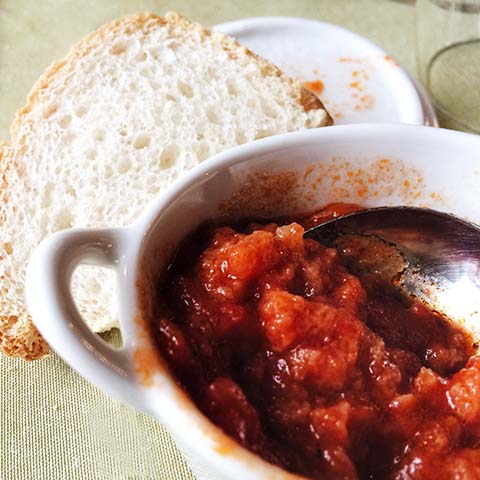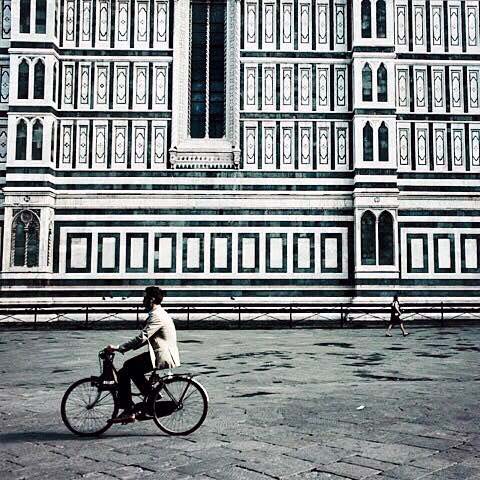Mauro Santoni is a Literature, History and Geography teacher living in Florence, and has a penchant for the theatre and the Arts. We talk to Mauro about his beloved home city, why Spaghetti Bolognese is not Italian, and his favourite under-the-radar art galleries in the capital of Tuscany.
Photo: Mauro Santoni
What do you feel defines Florentine cuisine?
In the past, food in Florence was poor in quality. For example, in the Middle Ages, the city had to pay high taxes on salt, and this meant that bread was often baked without salt due to its high cost. Today, this tradition continues. Typical Florentine food such as ribollita, panzanella and pappa al pomodoro was often made with stale bread. Eventually, such dishes become rich and tasty, and have come to define what Florentine cuisine is all about.
Pappa al pomodoro is a Tuscan soup made with bread, tomatoes and olive oil.
What do you feel are the most common misconceptions about Italian food?
Italian food is not only about pastas and pizzas, and spaghetti bolognese and Hawaiian pizza are not Italian recipes!
Is there a difference between food in Florence from other parts of Italy?
Sure, every region and city in Italy has their own type of food. For instance, Florence has very simple desserts, while Sicilian desserts tend to be rich and sweet. The character of Florentine food is formed by its ingredients which are all produced in Tuscany, such as the Chianina cow’s meat, olive oil and the Chianti vineyards!
In your opinion, which parts of Florence is the best for food?
In the city centre, that would be Santa Croce and Santo Spirito.
Where are your favourite restaurants or cafés in Florence for Italian food?
For something inexpensive, that would be the traditional Sabatino in San Frediano. For mid-range prices, Il Santo Bevitore in Oltrarno is a good choice. Il Cibreo in Sant’Ambrogio would be pricey but nonetheless, it serves great food as well.
What are some local dishes you feel travellers can’t leave Florence without trying?
The famed bistecca alla fiorentina (T-bone steak that’s served rare on the inside but seared on the outside), ribollita (Tuscan soup made with bread and vegetables) and panino al lampredotto (tripe sandwich) are an absolute must to try.
Where are your favourite art galleries in Florence?
Besides the famous art galleries (Uffizi Gallery, Galleria dell’Accademia and Palatina Gallery), I love the Bargello. It is one of the most ancient and charming buildings in Florence with the largest collection of Donatello’s sculptures. I also love the San Marco Convent, it was entirely painted by the Renaissance master Beato Angelico.
Photo: Mauro Santoni
What do you feel most travellers miss out on when they are visiting Florence?
I feel that most travellers miss out on the many cultural events of the city. Catching an opera at Maggio Musicale Fiorentino, as the Opera was practically born in Florence with Monteverdi! Watching V.O. (English dubbed) movies during one of the international cinema festivals in the gorgeous Odeon, probably the most beautiful movie theatre in Italy for its Art Nouveau style. It is also worth catching any one of the shows in the Bargello or in Strozzi’s Courtyards.
WHERE TO EAT IN FLORENCE
Sabatino
Where: Via Pisana, 2R, 50143 Firenze
For: Inexpensive traditional Florentine food
Il Santo Bevitore
Where: Via di Santo Spirito, 64/66, Firenze, Italy
For: Italian food at mid-range pricing
Il Cibreo
Where: Via del Verrocchio, 8r Firenze
For: High end Italian food

















